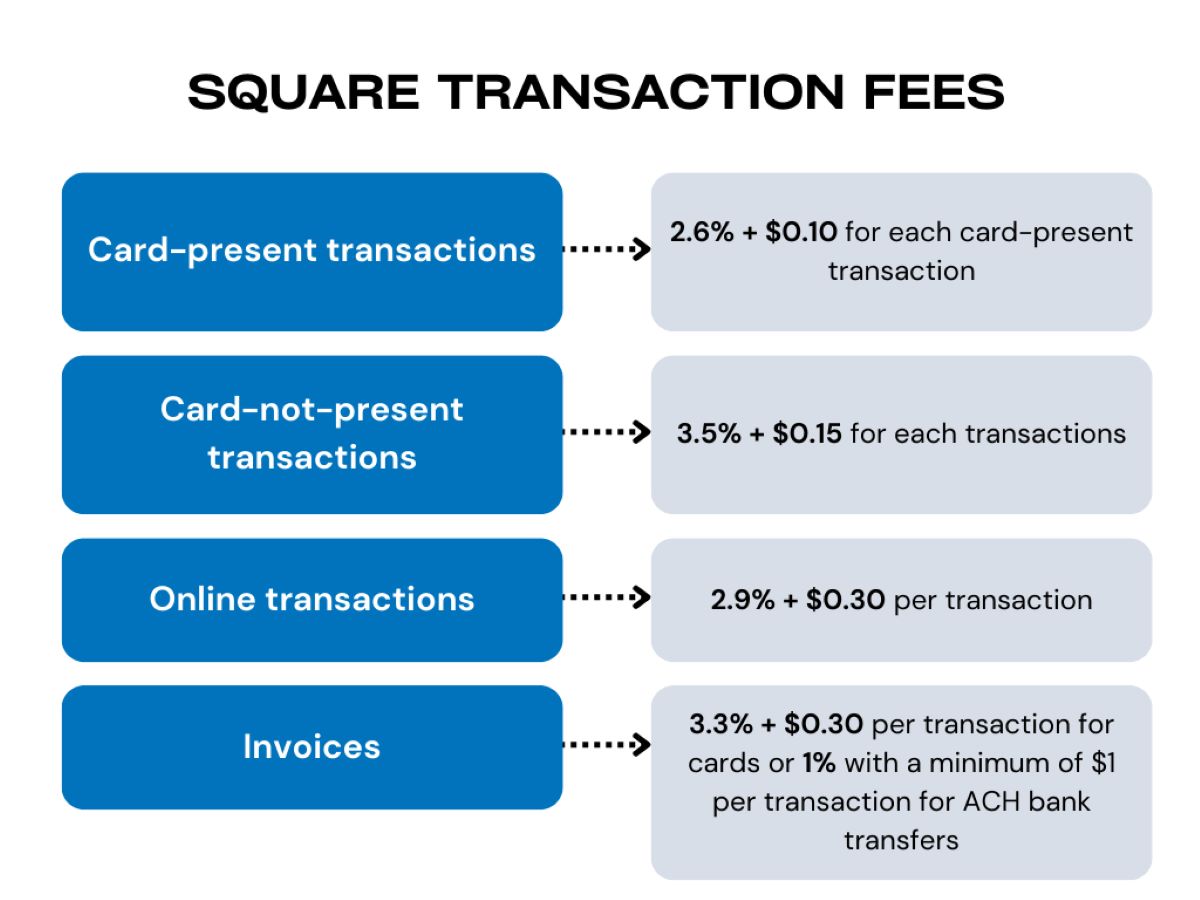

Finance
What Are Stripe’s Merchant Fees?
Published: February 24, 2024
Learn about Stripe's merchant fees and how they impact your finances. Understand the costs associated with using Stripe for your business.
(Many of the links in this article redirect to a specific reviewed product. Your purchase of these products through affiliate links helps to generate commission for LiveWell, at no extra cost. Learn more)
Table of Contents
Introduction
When it comes to processing payments for your business, choosing the right payment processor is crucial. One of the most popular options for online businesses is Stripe, known for its user-friendly interface, robust features, and competitive pricing. However, understanding the intricacies of Stripe’s merchant fees is essential for any business owner looking to make informed decisions about their payment processing.
In this comprehensive guide, we will delve into the details of Stripe’s merchant fees, shedding light on transaction fees, international fees, chargeback fees, and additional fees that may impact your business’s bottom line. By gaining a clear understanding of these fees, you can effectively evaluate the cost of using Stripe as your payment processor and make informed decisions to optimize your business’s financial operations.
Whether you are a small e-commerce store owner or a growing enterprise, navigating the landscape of payment processing fees is vital for maintaining profitability and sustainable growth. Join us as we unravel the intricacies of Stripe’s merchant fees, empowering you to make informed decisions that align with your business’s financial goals.
Understanding Stripe’s Merchant Fees
Before delving into the specific categories of Stripe’s merchant fees, it’s essential to grasp the overarching framework that governs these charges. Stripe employs a transparent and straightforward pricing model, which is particularly appealing to businesses seeking predictability and clarity in their payment processing costs. Unlike traditional merchant account providers, Stripe does not impose setup fees, monthly fees, or hidden costs, making it an attractive option for businesses of all sizes.
Stripe’s pricing structure is primarily centered around transaction-based fees, which are incurred each time a customer makes a purchase on your platform. These fees are influenced by various factors, including the location of your customers, the type of card used for the transaction, and whether the transaction is conducted in person or online. By understanding the nuances of these fees, businesses can effectively manage their expenses and optimize their revenue streams.
Furthermore, Stripe’s commitment to transparency extends to its approach to international transactions, chargeback disputes, and additional fees, all of which contribute to the holistic understanding of the cost implications associated with using Stripe as your payment processor. By comprehensively understanding these fees, businesses can proactively mitigate potential financial challenges and streamline their payment processing operations.
As we navigate through the specific categories of Stripe’s merchant fees, it’s important to recognize that the platform’s commitment to simplicity and fairness underpins its fee structure. This commitment is evident in Stripe’s dedication to providing businesses with the tools and resources needed to thrive in an increasingly digital and global marketplace, all while ensuring that the cost of payment processing remains transparent and manageable.
Transaction Fees
Transaction fees form the cornerstone of Stripe’s pricing model, representing the primary cost incurred by businesses for processing customer payments. These fees are typically calculated as a percentage of the transaction amount, coupled with a flat fee for each transaction. For businesses operating in the United States, the standard transaction fee charged by Stripe is 2.9% of the transaction amount, along with an additional 30 cents per successful charge. It’s important to note that these rates may vary for businesses operating in other regions or processing international transactions.
Furthermore, Stripe offers a customized pricing structure for businesses that handle large transaction volumes or operate in specific industries. By engaging directly with Stripe’s sales team, businesses can explore tailored pricing options that align with their unique operational needs, potentially reducing the impact of transaction fees on their overall revenue.
Understanding the nuances of transaction fees is essential for businesses seeking to optimize their payment processing costs. By evaluating the distribution of customer transactions, the average transaction amount, and the frequency of payments, businesses can strategically assess the financial implications of transaction fees and devise pricing strategies that align with their profitability objectives.
Moreover, businesses can leverage Stripe’s comprehensive analytics and reporting tools to gain insights into their transaction fee expenditure, identify patterns in customer spending behavior, and make data-driven decisions to enhance their revenue streams. By harnessing these tools, businesses can effectively manage their transaction fees and optimize their payment processing operations for sustained financial growth.
International Fees
For businesses engaged in global commerce, navigating the landscape of international fees is integral to understanding the complete cost structure associated with using Stripe as a payment processor. When processing payments from customers located outside the United States, businesses may encounter additional fees to account for the complexities of cross-border transactions.
Stripe applies an international fee of 1% on top of the standard transaction fees for payments made with cards issued outside the United States. This additional fee reflects the intricacies of processing international transactions and aims to accommodate the diverse regulatory and operational considerations associated with cross-border commerce.
By comprehending the nuances of international fees, businesses can effectively assess the financial implications of catering to a global customer base. Furthermore, leveraging Stripe’s suite of international payment capabilities, businesses can explore opportunities to expand their market reach and capitalize on the potential for growth in international markets while factoring in the associated fees.
Moreover, Stripe’s transparent approach to international fees empowers businesses to make informed decisions about their global expansion strategies, enabling them to weigh the benefits of accessing international customers against the incremental costs of processing cross-border transactions. This clarity is fundamental to fostering a strategic and sustainable approach to global business expansion, ensuring that businesses can capitalize on international opportunities while effectively managing their cost structures.
Chargeback Fees
Chargebacks can pose financial challenges for businesses, and understanding the associated fees is crucial for effectively managing the impact of disputed transactions. When a customer disputes a charge and initiates a chargeback, Stripe imposes a fee to account for the administrative and financial complexities involved in resolving the dispute.
Currently, Stripe charges a fee of $15 for each disputed transaction that results in a chargeback. It’s important for businesses to proactively mitigate the occurrence of chargebacks by providing exceptional customer service, maintaining transparent communication, and promptly addressing any concerns raised by customers. By prioritizing customer satisfaction and diligently managing their operations, businesses can reduce the incidence of chargebacks and minimize the associated fees.
Additionally, Stripe equips businesses with robust tools and resources to effectively manage and respond to chargebacks, empowering them to navigate the dispute resolution process with clarity and confidence. Leveraging these resources, businesses can streamline their chargeback management processes, potentially reducing the financial impact of disputed transactions on their bottom line.
Furthermore, by gaining insights into the factors contributing to chargebacks, businesses can implement proactive measures to enhance customer satisfaction, mitigate disputes, and fortify their operational resilience. This strategic approach not only minimizes the occurrence of chargebacks and associated fees but also fosters a customer-centric ethos that underpins sustained business success.
Additional Fees
While Stripe’s transparent pricing model is renowned for its simplicity, businesses should be aware of potential additional fees that may impact their overall cost of payment processing. One such fee is the ‘Disputed Payment Fee,’ which is incurred when a customer disputes a payment but the dispute is resolved in the business’s favor. Stripe charges a fee of $15 for each disputed payment that is successfully resolved in favor of the business.
Another notable additional fee is the ‘Instant Payouts Fee,’ which applies to businesses that opt for instant access to their funds. With instant payouts, businesses can transfer their Stripe balance to an eligible debit card or bank account within minutes, providing expedited access to their earnings. However, this convenience is accompanied by a fee of 1% of the payout amount, with a minimum fee of $0.50 per payout.
Furthermore, businesses utilizing Stripe’s ‘Connect’ platform to facilitate payments for third-party sellers or service providers should be mindful of the associated fees. Stripe applies a fee of 0.25% for each transaction processed through Connect, reflecting the additional functionalities and support offered to businesses leveraging this platform for their payment processing needs.
By proactively understanding these additional fees, businesses can effectively evaluate the cost implications of utilizing specific features and services offered by Stripe. This insight enables businesses to make informed decisions about their payment processing strategies, ensuring that the benefits of these services outweigh the associated fees, thereby optimizing their operational efficiency and financial performance.
Conclusion
As we conclude our exploration of Stripe’s merchant fees, it becomes evident that a comprehensive understanding of these fees is indispensable for businesses seeking to optimize their payment processing costs and enhance their financial resilience. Stripe’s commitment to transparency and simplicity in its pricing model empowers businesses to make informed decisions about their payment processing strategies, aligning their operational needs with their financial objectives.
By delving into the nuances of transaction fees, international fees, chargeback fees, and additional fees, businesses can gain clarity on the cost implications of leveraging Stripe as their payment processor. This clarity enables businesses to proactively manage their expenses, devise pricing strategies, and capitalize on the diverse capabilities offered by Stripe to drive sustained growth and profitability.
Furthermore, Stripe’s emphasis on providing businesses with robust tools and resources to navigate the complexities of payment processing reinforces its commitment to supporting the success of its users. By leveraging these resources, businesses can streamline their operations, mitigate financial challenges, and foster a customer-centric ethos that underpins enduring success in an increasingly digital and global marketplace.
As businesses continue to navigate the evolving landscape of e-commerce and digital payments, the insights gained from this guide serve as a catalyst for informed decision-making and strategic planning. By harnessing the knowledge of Stripe’s merchant fees, businesses can fortify their financial foundations, capitalize on growth opportunities, and cultivate resilience in an ever-changing business environment.
In essence, the comprehensive understanding of Stripe’s merchant fees equips businesses with the clarity and confidence needed to navigate the intricacies of payment processing, empowering them to thrive in a dynamic and competitive marketplace while fostering sustainable financial success.














